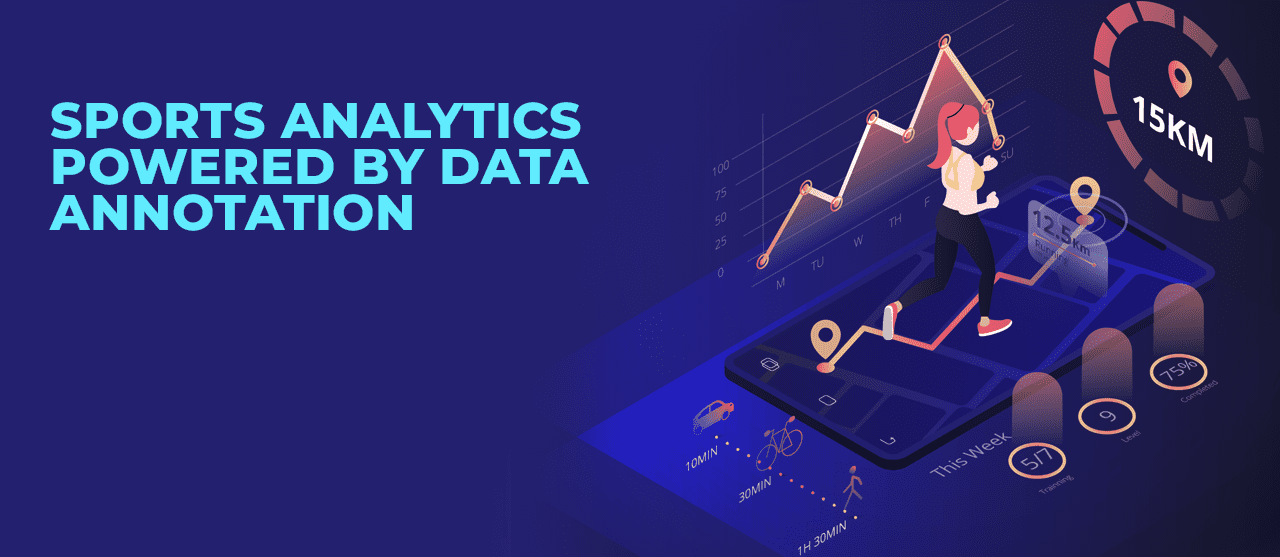
In the Hollywood movie ‘Moneyball,’ Billy Beane, the manager of the Oakland A’s uses statistical analysis and previously unused metrics to build his team based upon identifying players that were undervalued relative to their impact on winning. The result: his team became more competitive and ultimately went on a 20-game winning streak.
Can analytics be used to improve the performance of individual athletes or entire teams? Yes, and the domain of sports analytics has experienced somewhat explosive growth over the past decade.
Sports analytics is now being used to:
- Increase revenue
- Improve player skills and performance
- Enhance teams’ quality of play and win/loss performance
- Prevent major injuries, extend careers, and minimize games missed
Thanks to the intense competition among leading teams across sports, there’s a growing demand for sports analytics (and analysts). In fact, the global market for Sports Analytics is expected to grow to upwards of $4.5 billion by 2025.
Statistics have played a central role in modern sports for quite a while. More recently, the use of Artificial Intelligence (AI) in the sports domain is further transforming the way teams identify opportunities and develop “winning” strategies.
How do sports analytics and AI together add value for teams? Let’s take a look.
1. Player Scouting
Depending on the sport, scouting for and optimizing talent is costly and time-consuming. Team owners and managers need to ensure they have the right mix of players in their squad while managing their overall team salaries. AI, and more specifically, machine learning algorithms, analyze player-related data including past performances, playing videos, and skills, to make the right personnel decisions.
One recent example is Sean Durzi, a 19-year-old defenseman playing in the Ontario Hockey League was “found” as a result of using “Assistive AI” and sports analytics, which ranked Durzi as one of the top available players for the NHL draft. Durzi was subsequently drafted and is now playing on the roster of the LA Kings.
2. Performance Improvement
AI-driven sports analytics is also being leveraged to improve individual player performance by providing real-time feedback and helping to build personalized training programs. Overall, team performance depends upon pre-game and in-game strategies and tactics. For example, AI and sports analytics can help determine team selection (or lineups) based on prevailing conditions, the opposition team, and individual player matchups.
AI can also be used to improve sports performance by understanding player metrics. For example, ball handling, release time, vertical jump, and shot accuracy for basketball. Similarly, in cricket, players are using sensor-enabled bats to measure shot quality and detect the point of impact, and the speed of a delivered ball (in a simulated mode).
Further, team coaches and support staff are using data to make micro-decisions about workload management and game strategies. For individual players, wearable sensors in the form of “smart clothing” or fitness bands can measure and track their progress. For instance, wearables can now measure the player’s breathing and heart rate along with their hydration levels and body temperature, which can determine individual player-level training and nourishment needs.
3. Predictive Analytics
AI-based predictive models can analyze matchups and predict outcomes. A well-known example of the use of predictive analysis in sports is that of the Boston Red Sox baseball team. By predicting the performance of its players, this team managed to win three World Series titles after 86 years of heartache.
ML models can also predict which baseball player can perform better at a given position on match day. These models are built on player parameters such as:
- Previous player performances against a team (or individual)
- Match conditions on the day like weather and playing surface
- Player statistics at home or away
Another classic example of predictive analytics in sports is that of Formula 1 racing, where participating teams integrate telemetry data from thousands of sensors generating millions of data points every second to optimize in-race strategies like the number of pit stops, tire changes, and overtakes.
Every professional team in the NBA now has computer vision systems to track the movement of the ball and players moving around the court. They analyze this data using machine learning to identify player effectiveness on both offense and defense and in specific circumstances like pick-and-roll execution.
4. Fan Engagement
Sports fans today want to experience more than simply watching their favorite team (or player) in action. They are now looking for more immersive and engaging experiences. To meet that demand, sports teams can track fan movement and purchase patterns during home games and create opportunities for on-site engagement based on that information. In addition, teams can enable personalized engagement with their most “loyal” fans through social media.
Sports Analytics (along with AI recommendation engines) can help sports franchises determine:
- What kind of merchandise fans prefer?
- Which events and games are they more likely to attend?
- Who are their favorite players?
The Complexities Of Sports Analytics And The Role Of Data Annotation
For effective analytics, sports teams need to crunch massive amounts of data from diverse sources. Millions of fans attend sporting events each year. For example, the regular-season games of all National Football League (NFL) teams were attended by a total of 16.67 million spectators in 2019. This generates a large amount of data available for analytics.
That said, data sources in the Sports domain can be extremely diverse and complex as it is flowing through IoT-enabled devices, social media platforms, and various sports apps. Concerns about data privacy or data storage add complexity to the analytics processes.
This is where data annotation can help simplify massive volumes of data and make it “analytics-ready.” Some examples include:
- The use of “bounding box” annotation helps capture pictures and provide training datasets for AI-based models.
- Video games can be enhanced by analyzing and annotating human actions and postures.
- Annotation of recorded sporting events provides detailed and labeled information which can then be used for advanced analytics.
Conclusion
There is tremendous potential to leverage sports analytics to improve player and team performance. Data-driven insights are growing the number of use cases and applications, leading to improved decisions by professional sports teams. To handle complexities associated with sports analytics, data annotation can help deliver relevant data and accurate insights to decision-makers.
EnFuse Solutions has significant experience in the field of data annotation in support of AI and data analytics, helping companies reap maximum gains on their initiatives. If you are looking for assistance in the area of sports analytics, reach out to us to learn how we can help you succeed.

















Comment